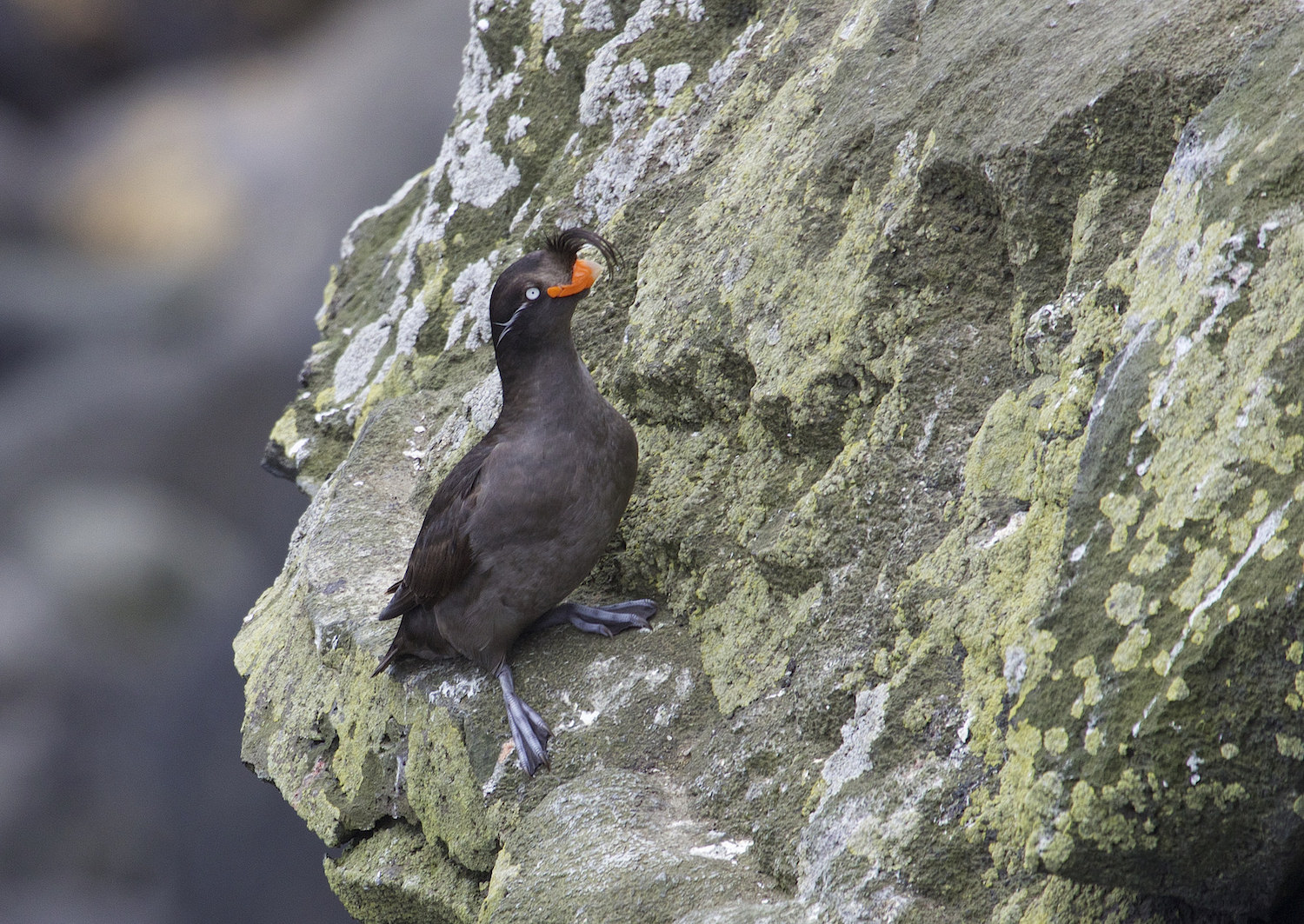In the cold, rugged Shumagin islands off the southern coast of mainland Alaska, there are no evergreen tangerines growing. However, a trip to one of these 20 islands will have you wondering why the air perpetually smells like oranges.
It turns out that a type of Alaskan seabird makes its own tangerine-scented cologne to communicate with a potential mate. Both males and females emit their own orange scent. But male crested auklets, in particular, produce a stronger aroma to show off their wares and get the girls.
Independent marine biologist Hector Douglas, also a former assistant professor of biology at the University of Alaska Fairbanks, began studying crested auklets in 2002, when he was a graduate student at the UAF’s Institute of Marine Science. Douglas was sailing to Big Koniuji island on a fishing boat when the air suddenly began smelling like tangerines. He looked up and saw a huge flock of crested auklets soaring over his head.
“The citrus odor is incredibly intense,” Douglas says. “They’re the strongest smelling birds I know of.”
Crested Auklets Smell Like Oranges To Get The Girls
Not too long ago, bird researchers have panned the idea that birds have a sense of smell. The notion alone that birds give off a particular scent was ridiculous. However, Douglas hypothesized that crested auklets produce their own natural cologne to signify their fitness level and, thus, their mating capabilities.
Researchers have long believed that the size of a bird’s crest, the tuft of colorful feathers on top of its head, is a sign of sex appeal. But unlike the peacock‘s elaborate display of fanning out its feathers, for instance, a bird’s crest size costs nothing to make. This makes it an unreliable sign of fitness or fertility.
Making natural cologne, however, is requires a lot of energy.
“The individuals that are secreting the odor are saying, ‘I can do this, despite the fact that I’m giving up some of my metabolic energy,'” Douglas explains.
Crested Auklets Make Their Own Citrus-Scented Cologne
To test his theory that the birds use scent as a sign of fitness in males, Douglas collected dozens of male crested auklets and transported them to Florida. He placed the birds in a specialized chamber filled with purified air that could pick up molecules of the bird’s scent.
After filtering and analyzing the samples, Douglas found octanal, a type of organic compound that is also found in the rind of citrus fruits and perfumes such as Chanel No. 5.
He also discovered that the birds with the largest crests made more octanal than their smaller-crested rivals, suggesting that the tangerine scent is highly attractive to female crested auklets. Douglas found that the smellier birds released more corticosterone, hinting at better levels of fitness.
“Something happened in evolution to favor the production of these chemicals,” Douglas says.
The Discovery Of The Tangerine-Scented Seabirds
Crested auklets were first recorded to emit their own tangerine-scented perfume in 2003 by a team of biologists at Swarthmore College in Pennsylvania.
“It’s like someone is peeling a tangerine next to you,” team lead Julie Hagelin once told Nature journal.
The team found that the perfume is actually a blend of oils in the bird’s feathers. However, the preening gland was found to be odorless, leading researchers to believe that bacteria in its plumage may have something to do with the tangerine scent.
They also discovered that crested auklets prefer the smell of tangerine to animal musk or an odorless control.
Douglas first wrote his paper on crested auklets in 2002. It was published in the journal Behavioral Ecology on May 9.
Source: These Male Birds Smell Like Tangerines To Seduce Females | Tech Times













